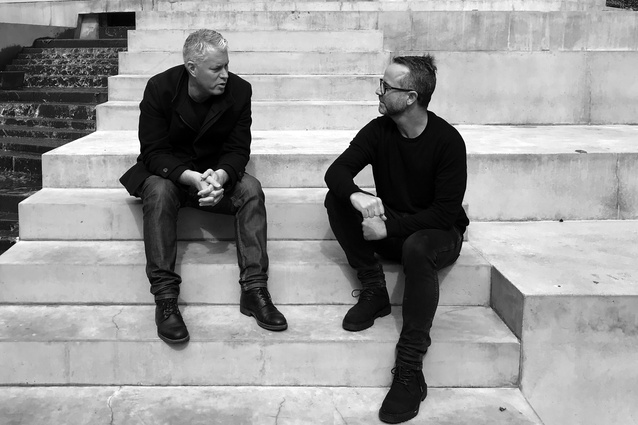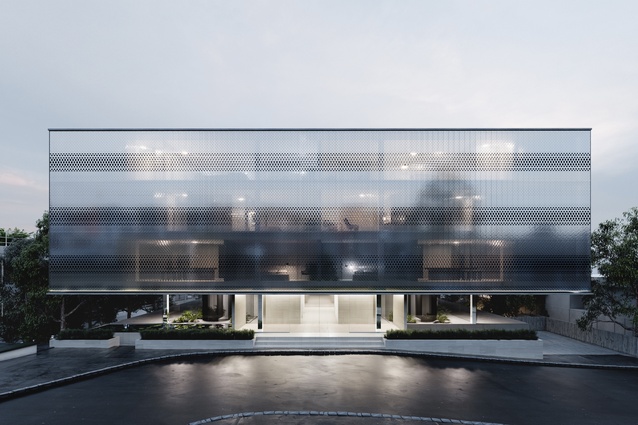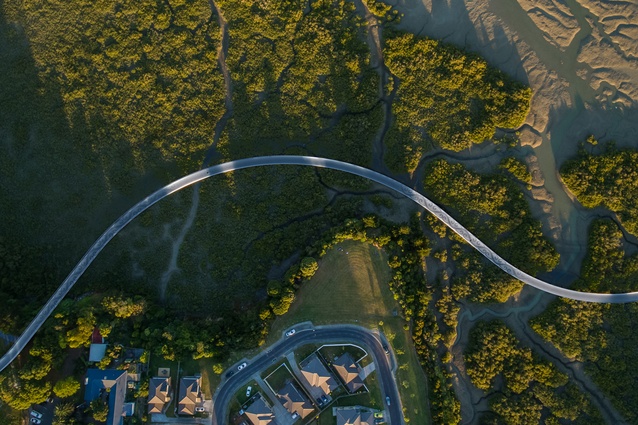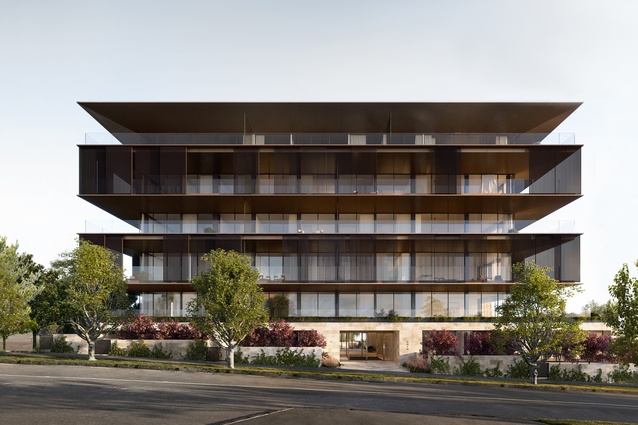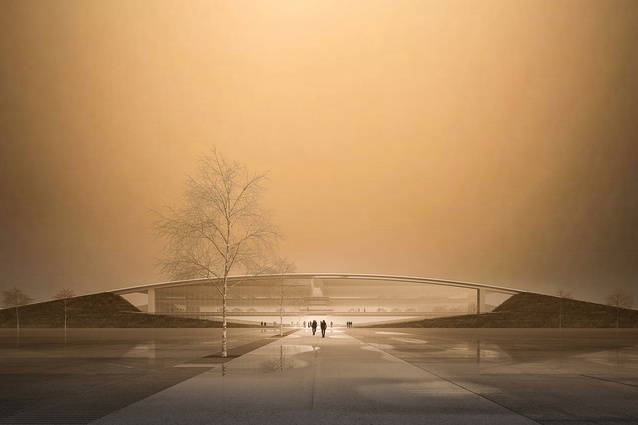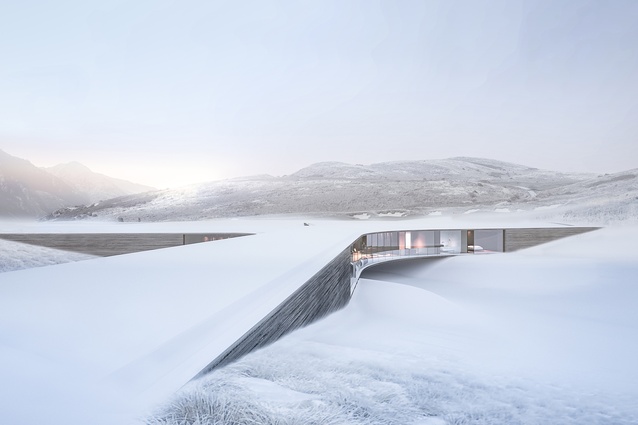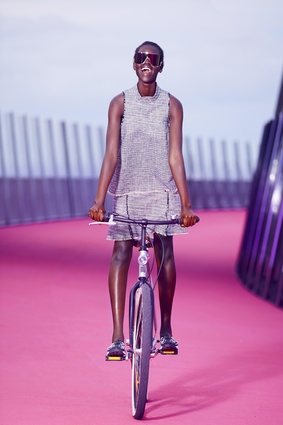Carving a niche: Monk Mackenzie
Both Hamish Monk and Dean Mackenzie of Auckland-based practice Monk Mackenzie Architects (MMA) have a vast wealth of international experience, working in spots such as Hong Kong, New York and London for companies including OMA and Skidmore Owings & Merrill (SOM), where the two Kiwis first crossed paths.
Both returned to New Zealand approximately around the same time, partially for family reasons but also keen to carve their own path in architecture and with a desire to take hold of the reins after many years overseas working for other people. Hamish initially went out on his own, and, shortly after, Dean joined and Monk Mackenzie was born.

Where many new practices often start on small residential works and slowly work their way up, from day one Monk Mackenzie has felt genuinely comfortable in the civic, cultural and commercial realm of work.
While they have worked on award-winning houses and residential projects continue to be part of their forte, they enjoy the challenge of the range of social and political issues that come with larger-scale jobs.
Dean says, “Our international experience has definitely shaped our view of the world. Because we’ve worked overseas for so long and for some very large companies, we’re not afraid to jump in and give it a go”.
Although it was just the two of them initially rattling around in a large office space, the practice has grown rapidly, now employing ten people. To be able to take on extra work, the duo realise they need to go about it extremely carefully. Hamish says, “It’s always a fine line balancing too much work and not enough work. It’s about resourcing properly and having the robustness to ensure we always do a great job – as well as having more freedom to design and explore new things”.
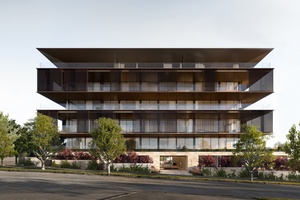
The general goal of the studio is to keep diversifying and not be limited to one typology. So far, so good: in the four years since the studio started, it has worked on infrastructure, housing, cultural, commercial and public projects.
Additionally, Dean says, “We like the idea of not being a traditional architecture office. One day we’d like to be involved in the likes of product and graphic design, etc. We’d like to be just designers who design. We also really enjoy collaborating with artists, and recently have done some work with contemporary artists Brett Graham and Lonnie Hutchinson”.
Aside from the economic rationale of diversification, the two enjoy the range of work they have on the table and the challenge that working on vastly different projects brings. Hamish: “I’m heavily process driven and like to find the unexpected in each project. The risk with doing the same thing over and over again is that you become a little bit repetitive. Exploring something new is always invigorating”.
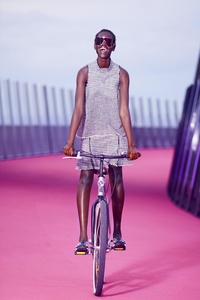
While running your own business is vastly different to working within a firm, for Dean it has been an evolution in the way he thinks about architecture. “You’re not just working on a project, you have to think on many different strategic levels. It might not sound like it, but it is actually quite fun, and presenting to and exciting clients is very satisfying.”
Although they are somewhat tired of talking about Te Ara I Whiti/the Lightpath, their most well-known project, the two learnt a lot while working on the bright pink cycleway that has transformed an old piece of motorway into a symbol of urban cycling in Auckland. “The Lightpath encouraged us to be bold and singular and we try to find that in most of our work: a strong, powerful move. We’re not about decorating projects with lots of things, it’s more about finding a poetic form or gesture,” says Dean.
That certainly looks to be the case with another civic infrastructure project that is currently on the cards, a pedestrian bridge in southern India that will connect the mainland to the Thiruvalluvar Statue and Vivekananda Temple, allowing pilgrims to visit both islands. Dean says that while the project is not 100 per cent assured, “It’s quite atypical and would hopefully be a sculptural, timeless project. It resonates with the language of the islands and uses the the petal of a lotus flower – an important symbol in India – as a metaphor”.
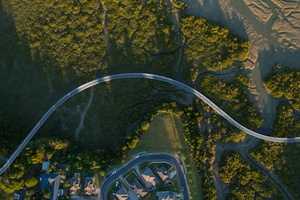
Another upcoming project the studio is working on is the Te Whau cycleway, designed for Auckland Council in collaboration with Jasmax and Novare. Connecting the Manukau Harbour to the Waitemata – 8 kilometres across tidal mangroves – the design was inspired by the artist Andy Goldsworthy, with the entire lightweight, silvery path formed out of continual curves that almost appear to float above the mangroves.
On the commercial side, after nine months of negotiation the studio has just secured Foodstuffs’ new HQ at Auckland Airport, a 9,000 square metre office building in which Monk Mackenzie will complete both the base build and the fit out. The project will play on an integrated landscape/building approach and will keep the studio busy for the next three years.
Monk Mackenzie’s residential works are highly striking and unique, with X House in Queenstown recently winning an award at the World Architecture Festival. They have worked on both single houses and apartments, with Soto in Remuera and Edition in Parnell being two of their latest schemes. Edition is a three-storey floating box that cantilevers out four and a half metres either side and boasts an unusual façade constructed of handmade Italian glass brick, which creates an air flow through to winter gardens that sit behind the building.

The studio intentionally avoids designing buildings that look like they are the result of a planning diagram, and, with Edition, they managed to push the height boundary controls due to the legible, clean roof form that they hope will set an example for the street and other neighbouring developments. Hamish says, “We wanted to get the best urban design outcome and thus challenged the controls a little, with the view that it was a better result for the surrounding area, not just the best return for the site”.
The pair are highly aware of the many challenges around apartment development in Auckland, and affordability is high on the list. Dean says, “With construction rates so high, a lot of developers are targeting a similar demographic because they have money but the real demand is actually at the other end of the scale, and that’s the end developers find extremely tough to make work financially. There’s a real conundrum in the market at the moment”.
Whether they are focusing on multi-unit developments or designing sweeping bridges, Monk Mackenzie’s work is connected by several common threads: the love of sculpture, the simplicity of the lines and an elegance that ensures a timeless design. Hamish and Dean work together so closely that they admit their world views may “dangerously reinforce the other”, however given the quality and breadth of projects that this exciting practice is producing, we can forgive them.

